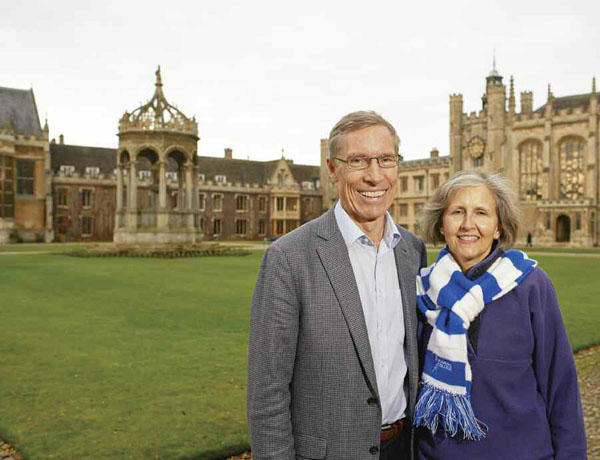
President David Oxtoby spent three months on sabbatical in the fall at the University of Cambridge, where he served as a visiting fellow at Trinity College. There he conducted collaborative research in chemistry, spending half of each day on a project involving the stability of protein mixtures in solution, exploring complex physical interactions that affect the biological activity of proteins in living cells. He also audited an introduction to philosophy class and sat in on a graduate seminar in the History of Science Department. The sabbatical marked his first since 1991, when he was a professor at the University of Chicago. Oxtoby, who has been at Pomona for nearly a decade, spent some of his time in Cambridge observing a different educational structure, one that served as part of the inspiration for President James Blaisdell’s consortium plan for The Claremont Colleges in the 1920s.
The lecturers are very gifted, and the supervisions, like the tutorials at Oxford, are highly individualized. I was particularly struck by the lectures, which are given once a week over an eight-week term to about 50 or 60 students. There is no interaction with the students—no questions, no discussion, just a straight lecture; a sort of performance. They don’t have discussion-based classes where the students learn through engaging with classmates and with the faculty member on the subject being studied. I came away thinking that having those discussions is something we do right at Pomona.
I would say one of the things that I really enjoyed at Trinity was that the faculty, the fellows who are post doc and higher level—some senior faculty, some junior—go to lunch together at ‘High Table.’ One of the things that was fun is the rule that you sit wherever the next opening is at this very long table, and you talk with whomever is right there. To me, that’s great. We do have the Frank Blue Room lunches at Pomona, and I’d love to see even more of that, just a chance to talk across the College.
So, I liked certain aspects of the faculty culture there, but I’m not sure there are educational practices that I would bring back and do differently. And it was fun to work in the lab again and to go to lectures, to sit in the back row and think about the class from a student’s perspective.
